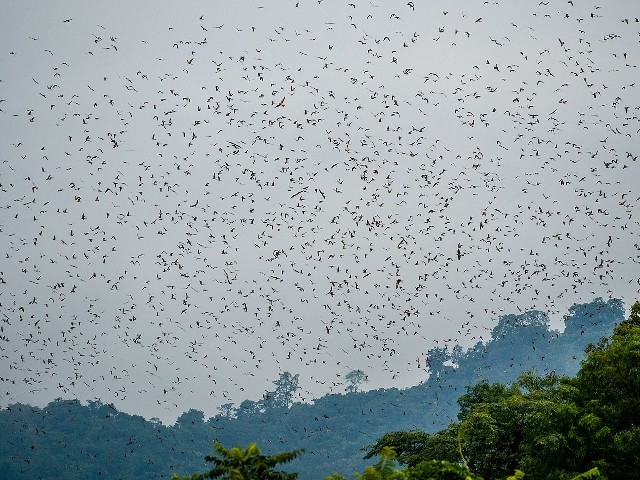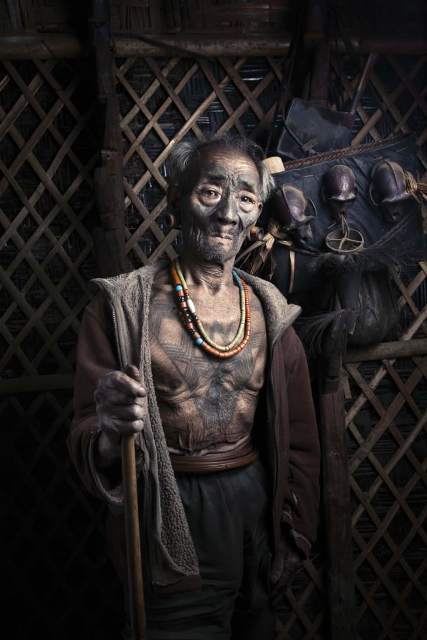Nagaland is a land of folklore, with different tribes, vibrant cultures, festivals, heritage, and traditions. The rustic state is home to many tribal and sub-tribal groups each having its own traditions and culture. It is also known as the state of festivals.
One of the smallest states in India Nagaland is situated in the northern-east part of India. It is bordered by Arunachal Pradesh in the north, Assam in the west, Manipur in the south, and Myanmar in the south.
Nagaland has something to offer to everyone. Here is a list of facts about Nagaland that inspire and motivate travelers from all around the world to travel to the Land of the Nagas – Nagaland.
1. Picturesque Beauty of the Land of the Nagas
Nagaland is a picturesque gateway for tourists with its lush green hills and mystifying valleys, scintillating landscapes, dense forests, and beautiful villages. It is blessed with a variety of flora and fauna which makes it a perfect destination for nature lovers.

The state has many wildlife sanctuaries and national parks. Some of the most prominent are Ntangki National Park, Singphan Wildlife Sanctuary, Puliebadze Wildlife Sanctuary, and Fakim Wildlife Sanctuary.
Nagaland offers some of the most beautiful and scenic trekking destinations for trekking enthusiasts who are thrilled to climb the mountains and view the world from the top, or simply with a desire to explore the woods, the flowers, and the wild vegetation.
Japfu Peak is located at a distance of about 14 km south of Kohima and is the second-highest point of Nagaland located at a height of 3084 meters above sea level. The Japfu Peak is a must-visit destination to experience breathtaking views and explore the flora and fauna.
It is also home to the Dzukou Valley which is known as the Valley of Flowers.
Read More: Interesting Facts about Seven Sister States of India
2. Tribes of Nagaland
The natural picturesque beauty of Nagaland is complemented by its people, cultural heritage, traditions, dance, and music. Nagas are known for their hospitality and warmth.

The people of Nagaland are very affectionate and welcome the tourist with warn-heart and love.
The state is inhabited by 17 major tribes and sub-tribes and each tribe is unique in character with its own distinct customs, language, and dress. Some of the major tribes are Angami, Ao, Chakhesang, Chang, Kachari, Khiamniungan, Konyak, Kuki, Lotha, Phom, etc.
💡 Travel Tips: Things to Do In Nagaland
3. Falcon Capital of the World

Amur Falcons is a fascinating small-sized migratory raptor from the Falcon family. Every year, millions of these Falcons migrate from Russia and China in large flocks across India and over the Arabian Sea to winter in Southern and East Africa.
Nagaland is known as the ‘Falcon Capital of the world‘ after an international team of ornithologists recorded almost a million amur falcon roosts in the state. The successful conservation efforts for these migratory birds have helped Nagaland to earn this title.
If you’re a passionate bird-watcher and want to spot these birds, do plan a trip to Nagaland during the winter season
💡 Travel Guide: Top Attractions and Places to Visit in Nagaland
4. Nagaland – Hornbill Festival
Nagaland is known as the Land of Festivals. Every tribe has its own colourful festivals which they celebrate with great enthusiasm and fervor.

Most of the people of Nagaland depend on agriculture and thus most of the festivals revolve around agriculture. Some of the most famous festivals of Nagaland are the Hornbill Festival, Moatsu Festival, Sekrenyi Festival, Tsukheneye Festival, Aoleang Festival, etc
To promote the vibrant cultural heritage of Nagaland and encourage inter-tribal interactions, the Nagaland government started organizing Hornbill Festival in 2000.
The Hornbill Festival is a rich traditional fiesta and the most cherished festival of the state and is often referred to as the festival of all festivals.
It is organized every year between the 1st to 10th of December at Naga Heritage Village in Kisama which is around 12km from the capital city of Kohima and is celebrated with much enthusiasm and zeal.
💡 Travel Tips: Things to Do in Kohima
5. Ghost Pepper or Bhut Jolokia

Nagaland is home to the bhut jolokia or ghost pepper which is one of the hottest chilis in the world at 855,000 SHU on the Scoville scale which means almost 170 times hotter than Tabasco sauce.
The ghost pepper originates from North East India and is a major part of the Naga and Assamese cuisine. In 2007, bhut jolokia, or ghost pepper was recognized by Guinness World Records as the hottest chili pepper in the World.
Read More: 10 Interesting Facts about Assam
6. Naga Shawls
The Naga shawls are one of the most important elements of the Naga dressing. Every major tribe of Nagaland has its own unique shawl patterns, design, and colours.
Naga shawls are traditional shawls and they have some distinctive patterns made by various Naga ethnic groups from Nagaland.

The Tsüngkotepsü is a warrior shawl from the Ao Nagas tribe and it can only be worn by warriors who had taken the head of the enemy warriors. But in modern times the Tsüngkotepsü shawl can be worn by the people who have done Mithun sacrifice.
When a Konyak woman gets married she wears a shatni shawl which is preserved and used later only to wrap her dead body.
In the Konyak tribe, when a woman gets married she wears a shatni shawl and this same shawl is used to wrap her body at the time of her death.
💡 Travel Guide: Unexplored Destinations in North East India
7. Dimasa Kachari Ruins

The Dimasa Kachari Ruins also known as the Kachari Ruins are located in Dimapur town of Nagaland. These ruins are a series of mushroom-domed pillars which are believed to be built by the Dimasa Kachari Kingdom before the Ahom invasion in the 13th century.
The purpose and the origin of these pillars are still mysterious. Some of the pillars stand in full glory while others are crumbled down.
These pillars are generally 8 to 10 feet high and it is also believed that a game similar to that chess was played here with these mushroom-shaped dooms.
Read More: 8 Amazing Facts about Manipur – The Jeweled Land
8. Head Hunting

The Konyak tribe also known as the headhunters of northeastern India majorly live in the Mon district of Nagaland. They are the largest among the 17 majorly recognized ethnic tribes of Nagaland and are well-known for their age-old tradition of headhunting.
The Konyak tribe is the fiercest warrior tribe in the Nagaland. They have facial tattoos that were earned for taking an enemy’s head. The number of hunted heads indicated the power of a warrior.
The decapitated heads were taken as trophies and usually hung in a communal house known as Baan.
💡 Travel Tips: Best Hotel Deals in Nagaland, Kohima
Some More Interesting Facts about Nagaland
- Nagaland became the 16th state of India with Kohima as the capital on 1 December 1963. Before 1963 it used to be a Union territory
- Nagaland is the only state in India where the majority of the population is Baptist.
- English is the only official language of Nagaland. Locals speak to each other in ‘Nagamese’ a language which is an amalgamation of Assamese, Bengali, and local dialects
- Mithun is the state animal of Nagaland and Blyth’s Tragopan or Grey-bellied Tragopan is the state bird
- Longwa village in the Mon district of northern Nagaland inhabited by the Konyak Nagas is unique in the sense that the Angh’s (village chief) house lies half in India and half in Myanmar.
- Dr. Talimeren Ao from Nagaland was the first captain of Independent India’s Olympic Football team.
- To safeguard their customs, rights, and issues local ethnic tribes have formed an organization known as ‘Naga Hoho’
- The highest peak of Nagaland is Mount Saramati at an elevation of 3841 meters and acts as the natural barrier between Nagaland and Myanmar.
- The Kohima War Cemetery was established in April 1944 to commemorate the soldiers who died in the Second World War in Kohima.






